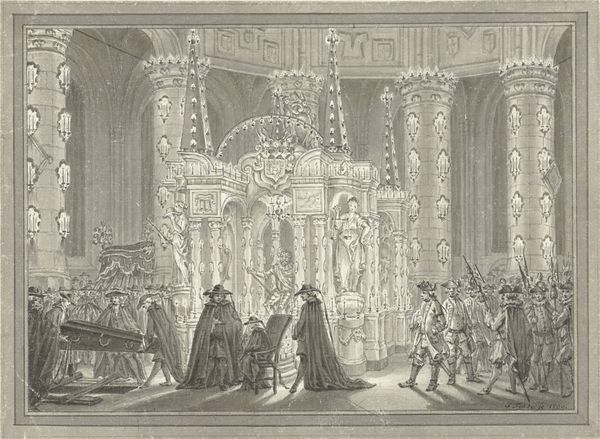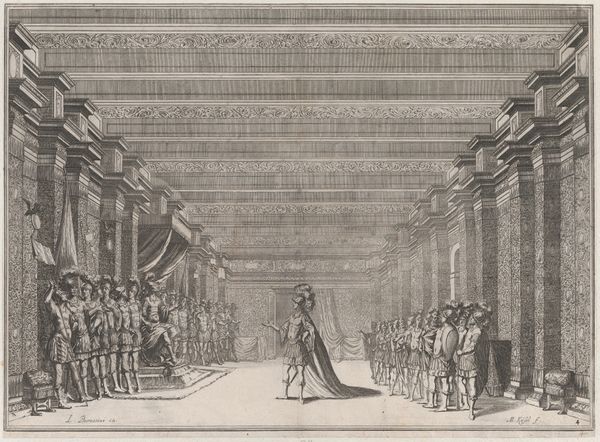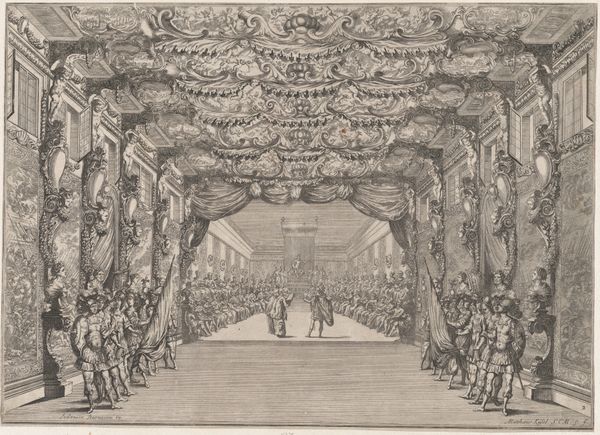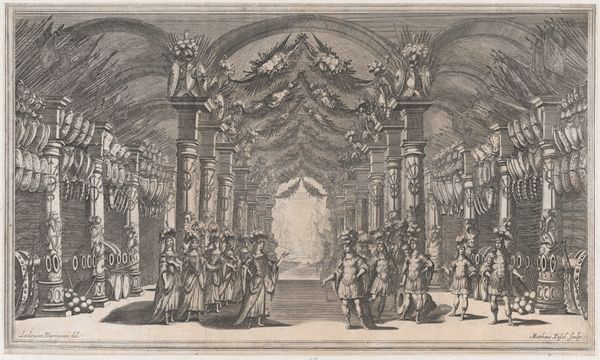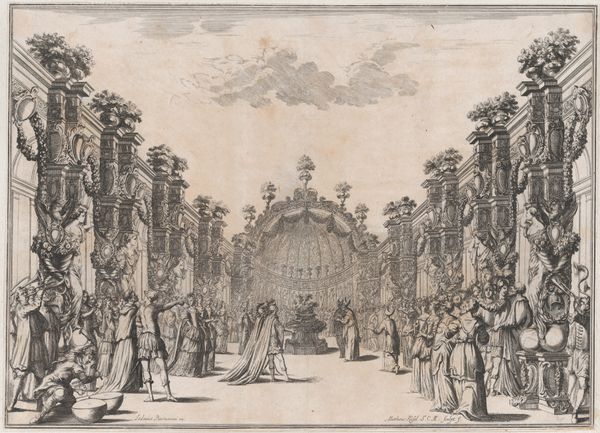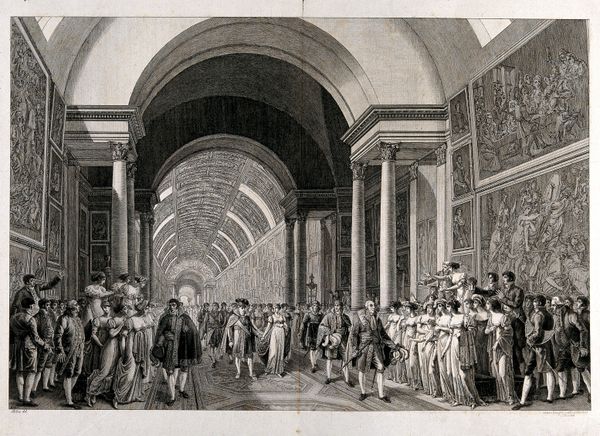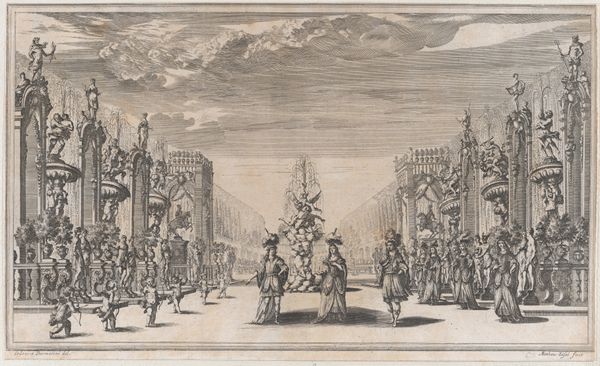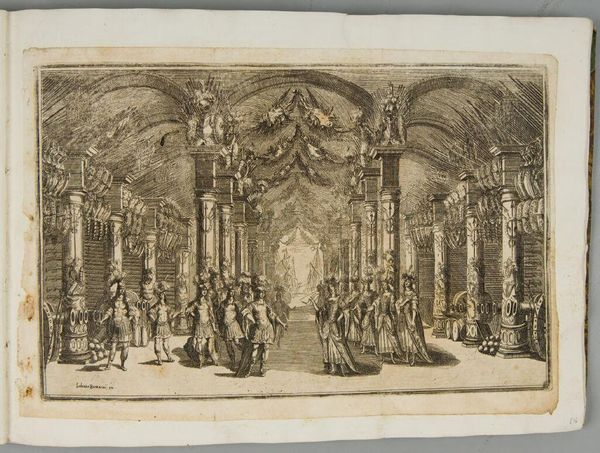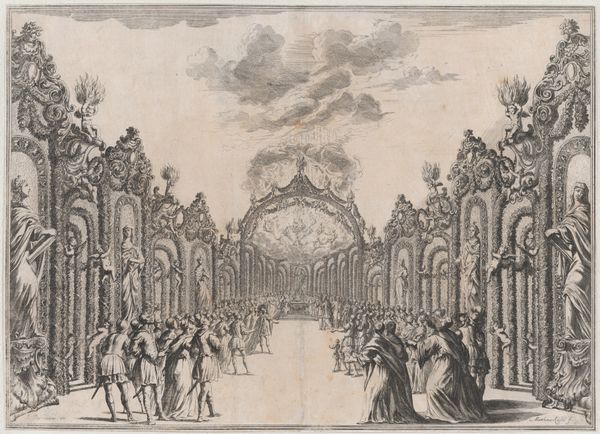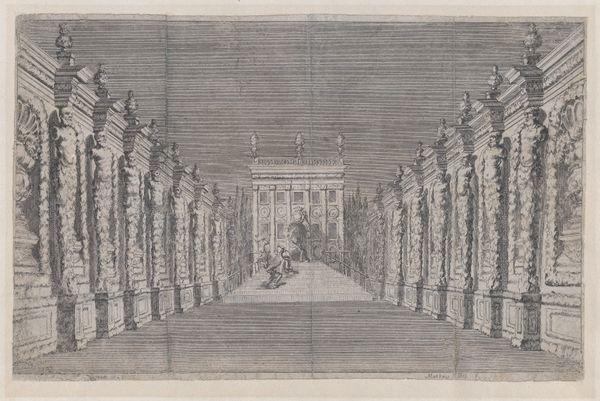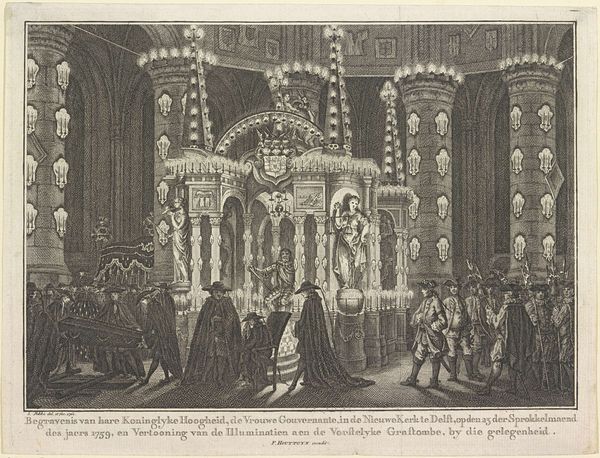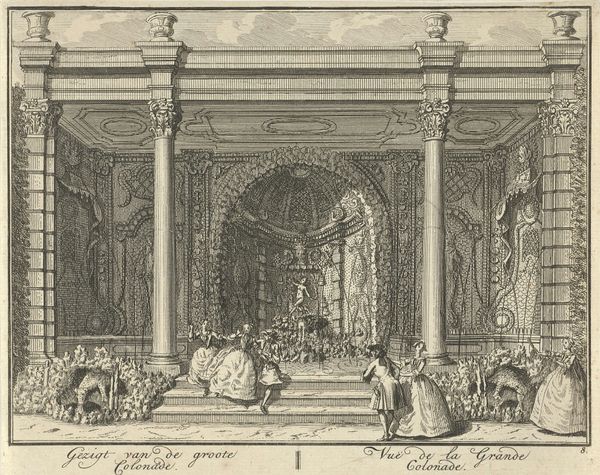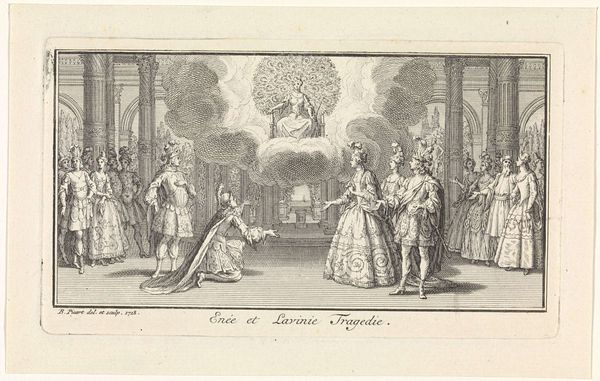
The Arsenal; two soldiers conversing with two women on the right as a group of soldiers look on from the left; set design from 'Il Fuoco Eterno' 1674
0:00
0:00
drawing, print, engraving
#
drawing
#
baroque
#
pen drawing
# print
#
figuration
#
soldier
#
cityscape
#
history-painting
#
engraving
Dimensions: Sheet (Trimmed): 12 in. × 16 9/16 in. (30.5 × 42.1 cm)
Copyright: Public Domain
Curator: Look at this print by Mathäus Küsel from 1674, titled "The Arsenal; two soldiers conversing with two women on the right as a group of soldiers look on from the left; set design from 'Il Fuoco Eterno'." It's quite a mouthful, isn’t it? Editor: It’s incredibly detailed! The overwhelming scale gives a sense of power. What strikes me most is the depiction of architectural materiality; look at the crafted elements adorning this interior! It seems excessive, but the sheer volume implies tremendous societal resources allocated to artmaking. Curator: Precisely! Küsel masterfully captures the essence of Baroque theatricality here. Consider the stage-like composition. The rigid rows of soldiers positioned to the left offer such a striking juxtaposition with the relaxed pose of the soldier conversing with the women on the right. Editor: I find it interesting how he employs a kind of visual cataloging with columns literally stacked with material implements. Helmets, drums, shields...all components used to produce a very specific image and exercise domination through war. What are your thoughts on how the artist positions those relationships to authority? Curator: Indeed! The women become almost ornamental within this militaristic landscape, reflecting broader gendered power dynamics. The scene hints at discussions of power, particularly the access granted by social status, yet framed within the conventions and expectations of courtly love. How are women's roles represented in a world dominated by conflict and military authority? It offers an entry point into Baroque societal tensions. Editor: This image functions almost like an instruction manual. The material world here dictates social relations of production. You are shown an illustration about hierarchies and who or what wields power—so I am curious about how it was disseminated. Were images like this meant for popular consumption or strictly kept for elites? Curator: That’s a compelling point. While the print suggests a rarefied setting, the engraving medium allowed for relatively wider circulation than a unique painting, but would still appeal to an elite who frequented theatrical productions and engaged with political imagery. Perhaps a bridge between propaganda and artistic expression? Editor: Propaganda as cultural craft… So as we conclude our analysis of Mathäus Küsel’s piece, for me, the process by which the objects in this space were made—from extraction to arrangement—says quite a lot. Curator: Yes, this image, steeped in historical context, helps us reflect on the complex ways gender and class intersect with displays of power, which still has such critical relevance today.
Comments
No comments
Be the first to comment and join the conversation on the ultimate creative platform.
